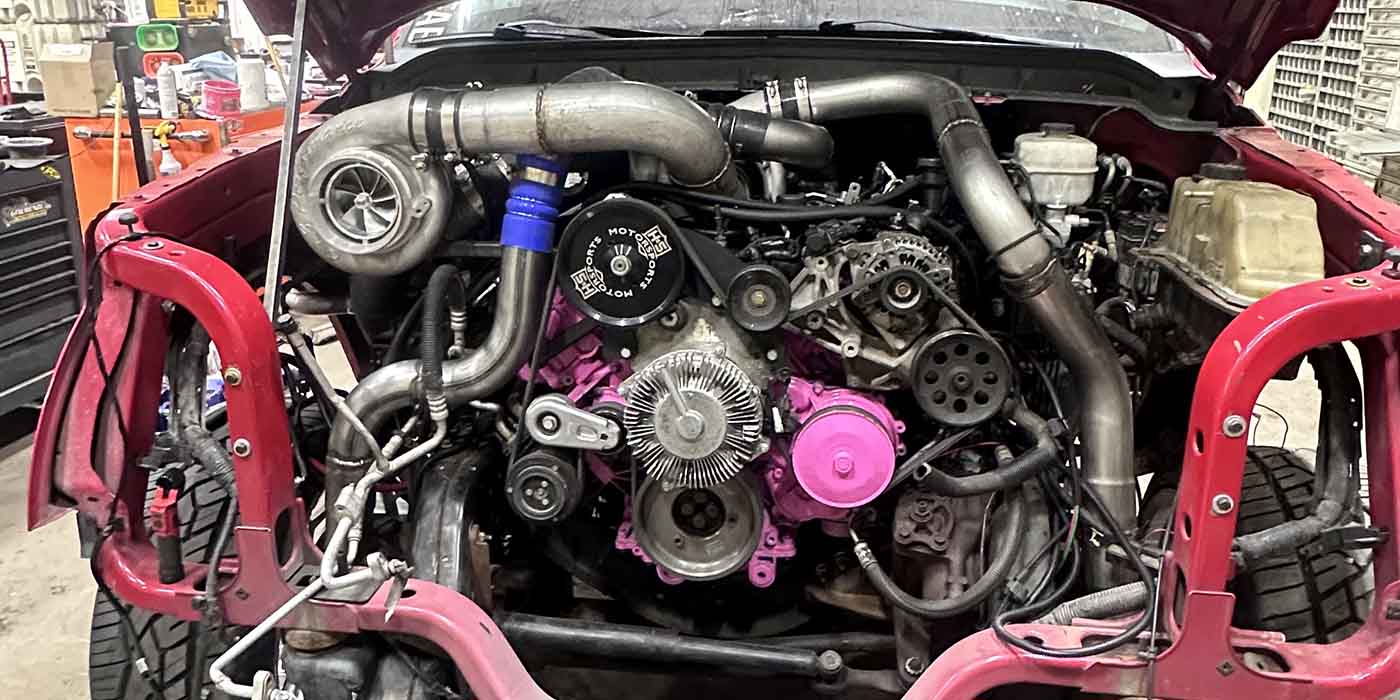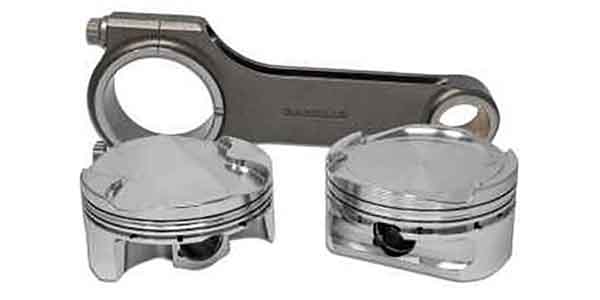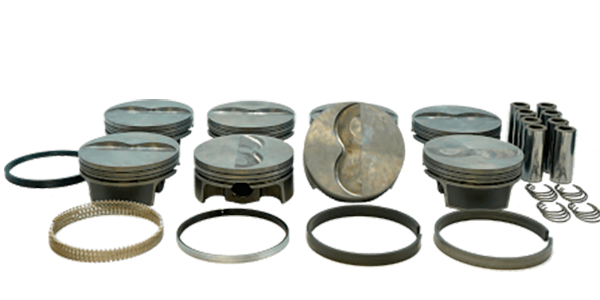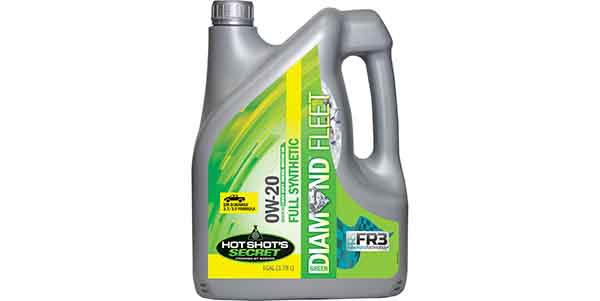Higher peak cylinder pressures! This seems to be the main topic for today’s diesel engine. Emissions limits are becoming more stringent and consumers are demanding lower fuel consumption. Commercial engine development is primarily focused on higher peak cylinder pressures in higher boost applications. Modern injection techniques along with turbocharging help meet the efficiency demands with emissions compliance. The biggest concern by the manufacturer are the internal components needed to endure the additional stress loads from higher peak cylinder pressures.
For the most part, cast aluminum pistons have served the diesel industry well. Their biggest asset has been thermal efficiency which relates to heat dissipation – in today’s smaller engine applications they work great because they have lots of mass, which is helpful in transferring heat from the bowl to the piston rings, which can be transferred to the cylinder walls. The bowl is designed for emissions requirements with proper swirl and compression ratio to lower NOx and the piston has a long life span. Some are manufactured with anti-scuff coatings on the skirts and with a higher content of silicone for stability and efficiency. The skirt coating has been known to reduce friction by as much as 13 percent. So cast aluminum is very tough and can survive in stock and slightly modified applications. But, when cylinder pressures exceed 220 bar, they begin to fatigue quickly. Engines of today have been known to reach cylinder pressures as high as 300 bar under harsh boost conditions.
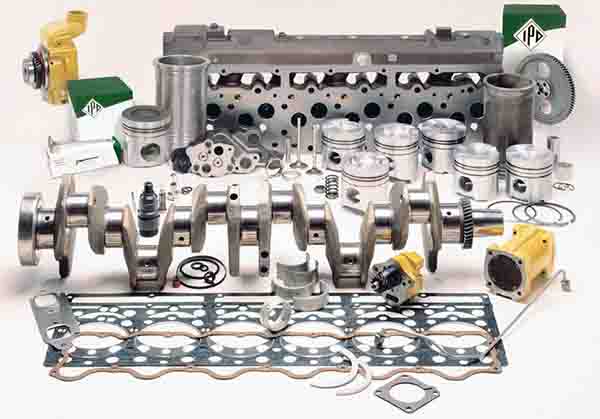
The question is often asked: Why not use forged aluminum pistons? The answer is you can and it will handle about anything you throw at it, but there are a lot of drawbacks. First of all, forged aluminum would open up doors for limitless designs but the price would be steep. Second, price isn’t the only concern: when you forge a diesel piston, there is not any way of placing a cooling gallery in the top of the piston for the bowl area. Getting rid of the heat becomes a major issue. Third, piston rings need support under high heat applications. For cast pistons there are steel inserts for the ring grooves used during the casting process. In forged applications there is no way to insert a steel ring support. The forged piston is made for strictly performance applications where the engine is run for only short periods of time.
Now if you are wanting a piston for dual purpose such as street and performance, there is a “performance cast” aluminum piston. The performance cast aluminum piston has several advantages in that the bowl area has been designed for better swirl optimization under performance conditions. They are produced for a number of applications and carry a steel insert for piston ring support. They also have anti-scuff coatings on the piston skirts.
For heavy-duty applications, the answer for today’s diesel engine is the use of steel pistons. Steel pistons have been used for quite some time but they face a whole new set of challenges. The hardest part about using steel surrounds thermal efficiency. Steel is harder to dissipate and transfer heat. So as modern diesel engines have started using higher peak cylinder pressures to reduce NOx, we now have a problem. It is not just heat that is the main focus. Higher peak cylinder pressures bring about more load demands and because oil has changed, lubrication becomes an issue.
The primary focus here is that manufacturers are going to have to continue to use steel pistons in heavy-duty applications. But, the piston design will be based on its ability to survive. Managing thermal performance brings about opportunities for different cooling techniques. Notice the use of the word “opportunity.” Problems are opportunities. Here are some of the challenges that are being faced with the use of diesel pistons.
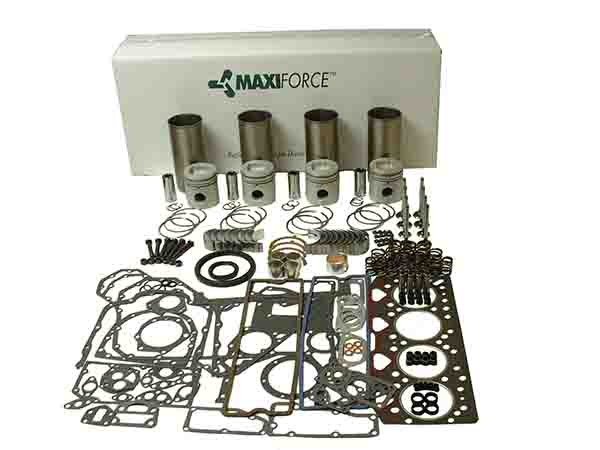
Engines have to be more efficient with less emissions. The use of heavier pistons means that there is more mass and more weight. Piston mass has to be reduced but its integrity is retained with rising cylinder pressures. Steel is very strong but has lower thermal conductivity so it requires greater cooling. Remember, heat has to be transferred from the piston crown to the piston rings so the heat can be transferred to the cylinder walls back into the cooling system.
The good thing about today’s technological advances is the instrumentation available for in-depth analysis of combustion. These advances have provided manufacturers the means of testing that has changed component design, material, and friction reduction. New steel pistons have now undergone a design change by what is known as friction welding. In basic terms, this is where the piston crown is placed in one centrifuge while the piston skirt is placed in an opposing centrifuge. As the pieces are spinning, they are brought together where they are friction welded. There are videos online that will paint a better picture. By using the friction welding process a large area can be created between the ring grooves and piston bowl. The large area helps enable the piston to be more thermal efficient by collecting heat. The cooling gallery high in the piston allows the steel piston to operate at higher combustion temperatures and pressures.
There have been some advances in anti-scuff skirt coatings. Now manufacturers have found that the use of polymer coatings improves fuel consumption and lowers emissions by reducing friction and wear. As mentioned earlier, anti-scuff coatings can reduce friction by as much as 13 percent for aluminum. But there have been reports that the steel piston may exhibit a higher gain with these coatings.
The combustion bowl often limits the strength of a diesel piston. After a period of time, exposure to high pressure and high heat tend to fatigue the piston bowl. Extended periods of fatigue lead to cracking of the bowl area. Manufacturers now use what is called a controlled re-melting of the piston bowl. The piston is manufactured by the bowl area being tig welded into place. This process helps refine the grain size of the material. Each time the cylinder fires ,the heat produced makes the piston stronger so bowl fatigue can be eliminated.
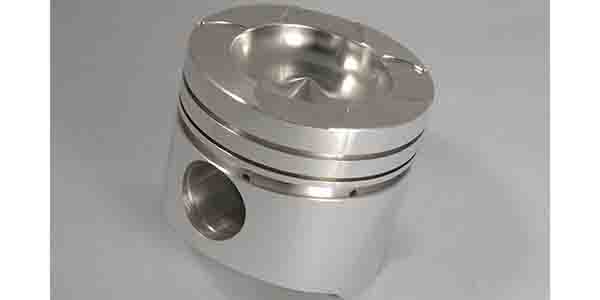
One manufacturer has incorporated what is known as a “sealed for life” coolant chamber into its piston design. The coolant chamber is created when the piston is friction welded. Because the friction welding process help create a large cooling gallery, the manufacturer filled the gallery with high temperature oil and inert gas. The chamber is permanently sealed with a welded plug during manufacturing. This “cooling chamber” design has allowed the steel piston to overcome temperature limitations by letting the high temperature oil be the heat transfer medium.
The “cooling chamber” design has been proven to be very effective even after 1,400 hours of continuous testing. Something mentioned earlier was the point about lubrication. Because a typical gallery of the piston crown can get so hot, engine oil being sprayed from the oiling jets below the pistons to the underside help take away heat. The problem is that the hot temperatures of the piston tend to degrade the engines lubricating oil. This in turn leads to carbon build up underneath the piston, which reduces cooling further. As time passes the piston becomes over heated and eventually fails. The “cooling chamber” helps transfer the heat and therefore the oil being sprayed underneath does not get degraded. Because there is no carbon build up, heat dissipation is unchanged and therefore always effective for the life of the piston. The “cooling chamber” is so effective that the spray from the cooling jets can be reduced by as much as 50%, which helps reduce work for the oil pump, making the engine more efficient.
Here is what lies ahead for diesel innovation and challenges for the piston manufacturers. Future diesel engines are going to run hotter. This means there are challenges with lubrication and cooling. Regulations have also demanded less emissions while consumers demand more fuel efficiency. The interesting fact is that now engines are becoming smaller to meet the emissions demands, but power has to be greater than the engine’s predecessor.










